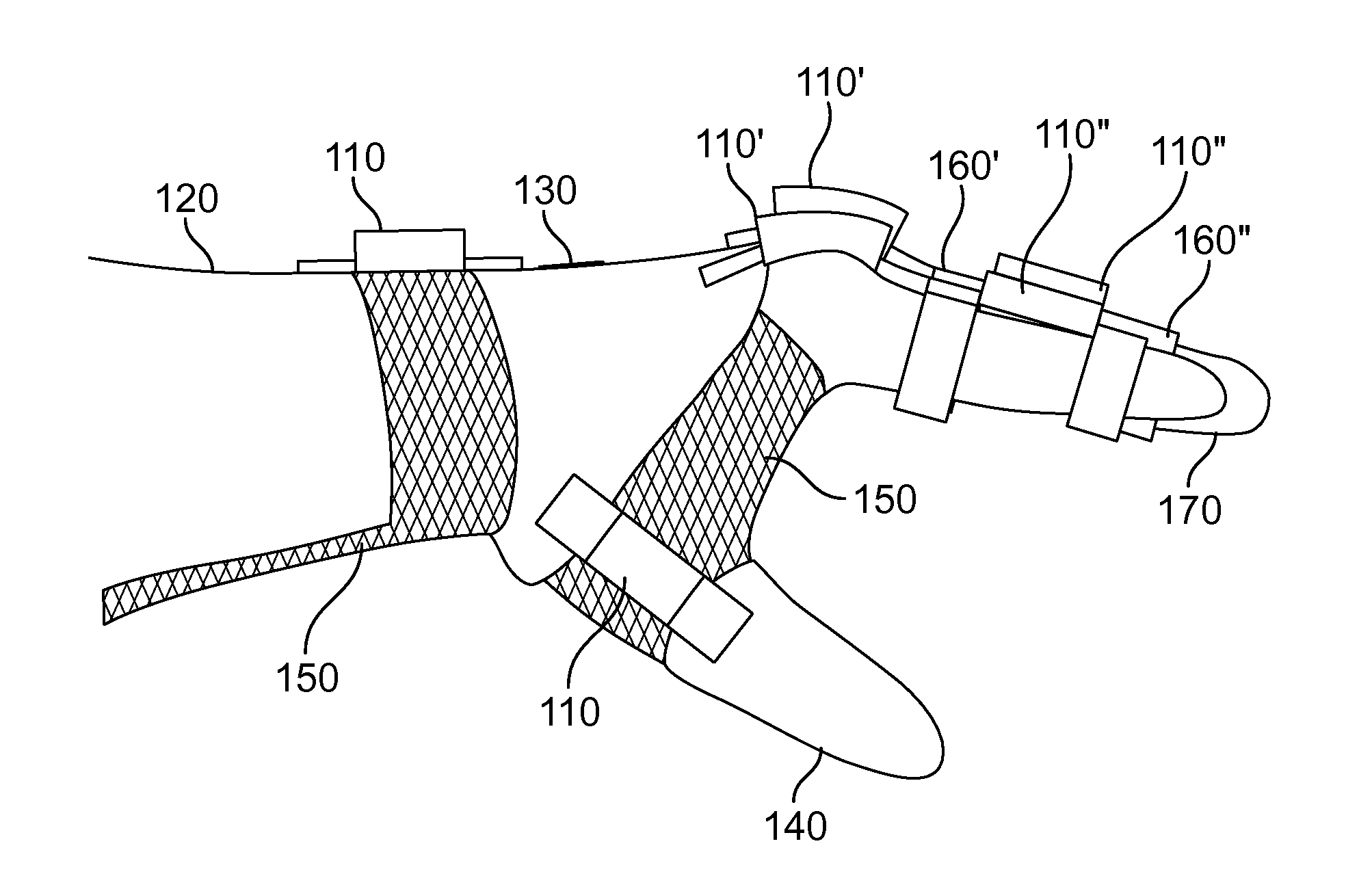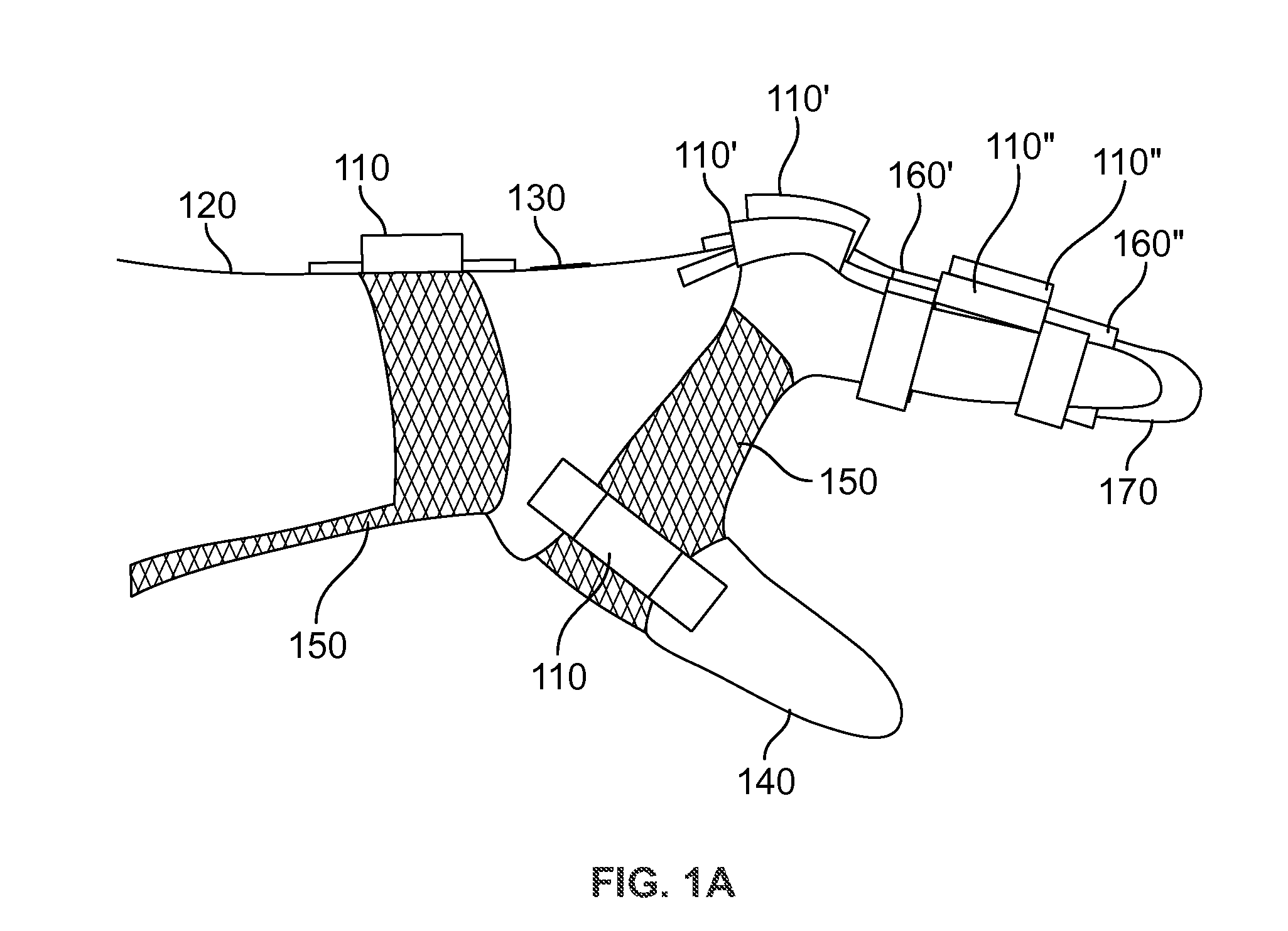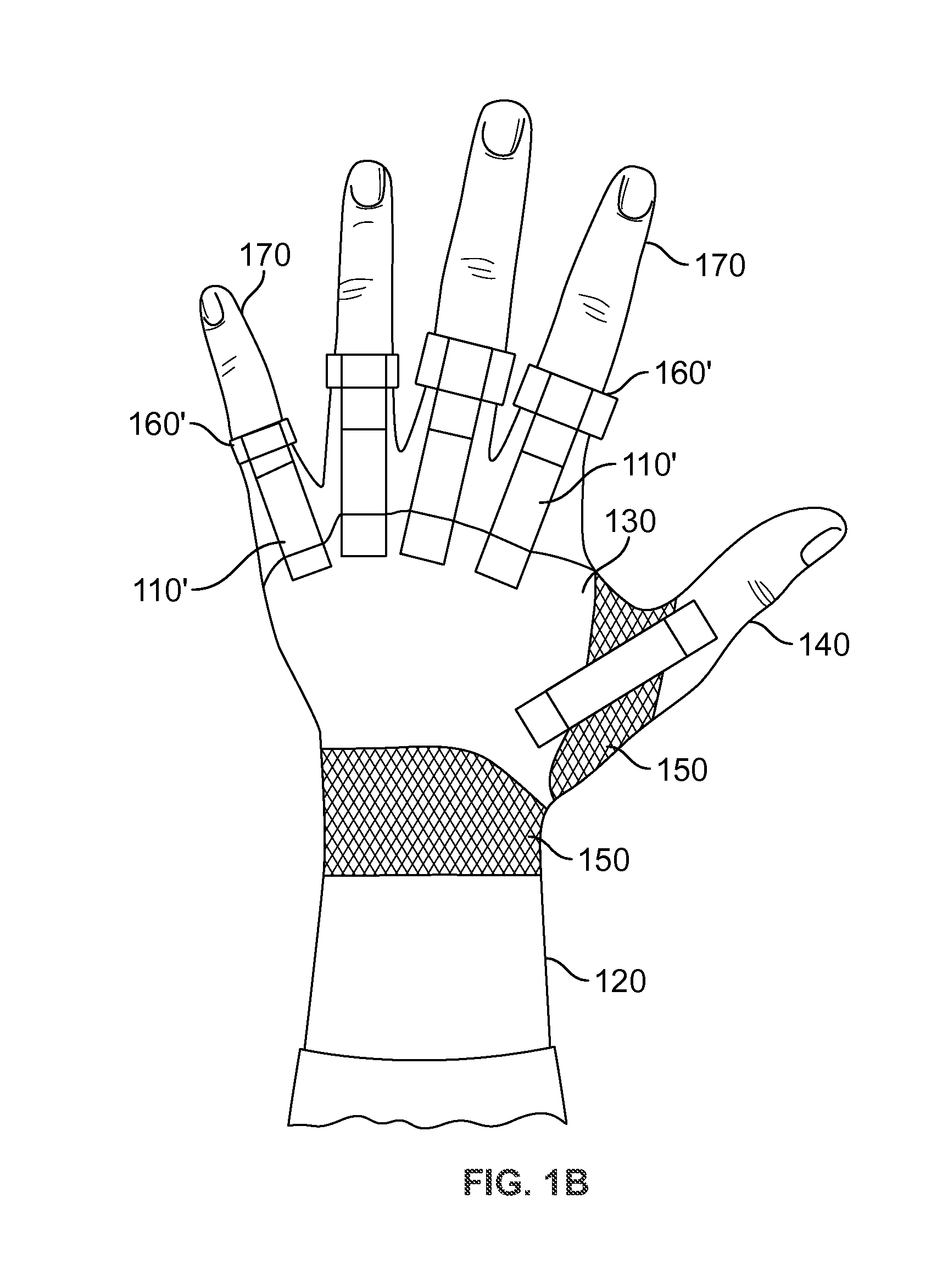Myoelectric hand orthosis
a technology of hand and hand function, applied in the field of orthotic gloves, can solve the problems of reducing the functional use of hand, affecting the ability of individuals to perform manual tasks, and restoring limited hand function to individuals unable to control finger movement, etc., and achieves the effects of enhancing or restoring hand function, safe for users to wear, and convenient donation and doffing
- Summary
- Abstract
- Description
- Claims
- Application Information
AI Technical Summary
Benefits of technology
Problems solved by technology
Method used
Image
Examples
Embodiment Construction
[0039]Researchers in rehabilitation engineering design orthoses to compensate or substitute for an impaired organism by offering either a more normal function or an alternate mode of function. A major function of the hand orthosis is to provide the ability to pinch, grip, and release objects during daily living activities. The ideal hand orthosis uses the skeletal structure and the biomechanical properties of the user's limb as an integral part of its powered mechanical system.
[0040]The present disclosure relates to the area of myoelectric orthotic systems and methods of making and using the systems. The description that follows relates to a myoelectric hand orthosis. However, it is to be understood that the while the present disclosure lends itself well to applications in assistive device technology, the disclosure, in its broadest aspects, may not be so limited. Rather, the present disclosure may be used with any type of orthotic system.
[0041]The device of the invention is general...
PUM
 Login to View More
Login to View More Abstract
Description
Claims
Application Information
 Login to View More
Login to View More - R&D
- Intellectual Property
- Life Sciences
- Materials
- Tech Scout
- Unparalleled Data Quality
- Higher Quality Content
- 60% Fewer Hallucinations
Browse by: Latest US Patents, China's latest patents, Technical Efficacy Thesaurus, Application Domain, Technology Topic, Popular Technical Reports.
© 2025 PatSnap. All rights reserved.Legal|Privacy policy|Modern Slavery Act Transparency Statement|Sitemap|About US| Contact US: help@patsnap.com



